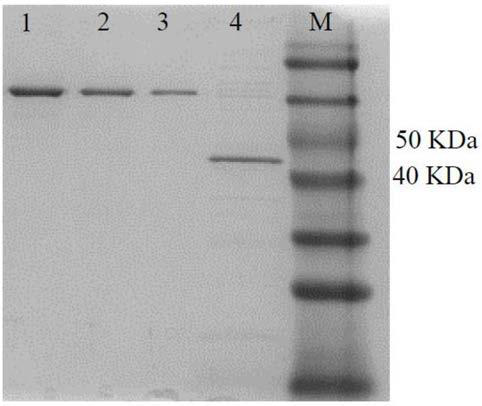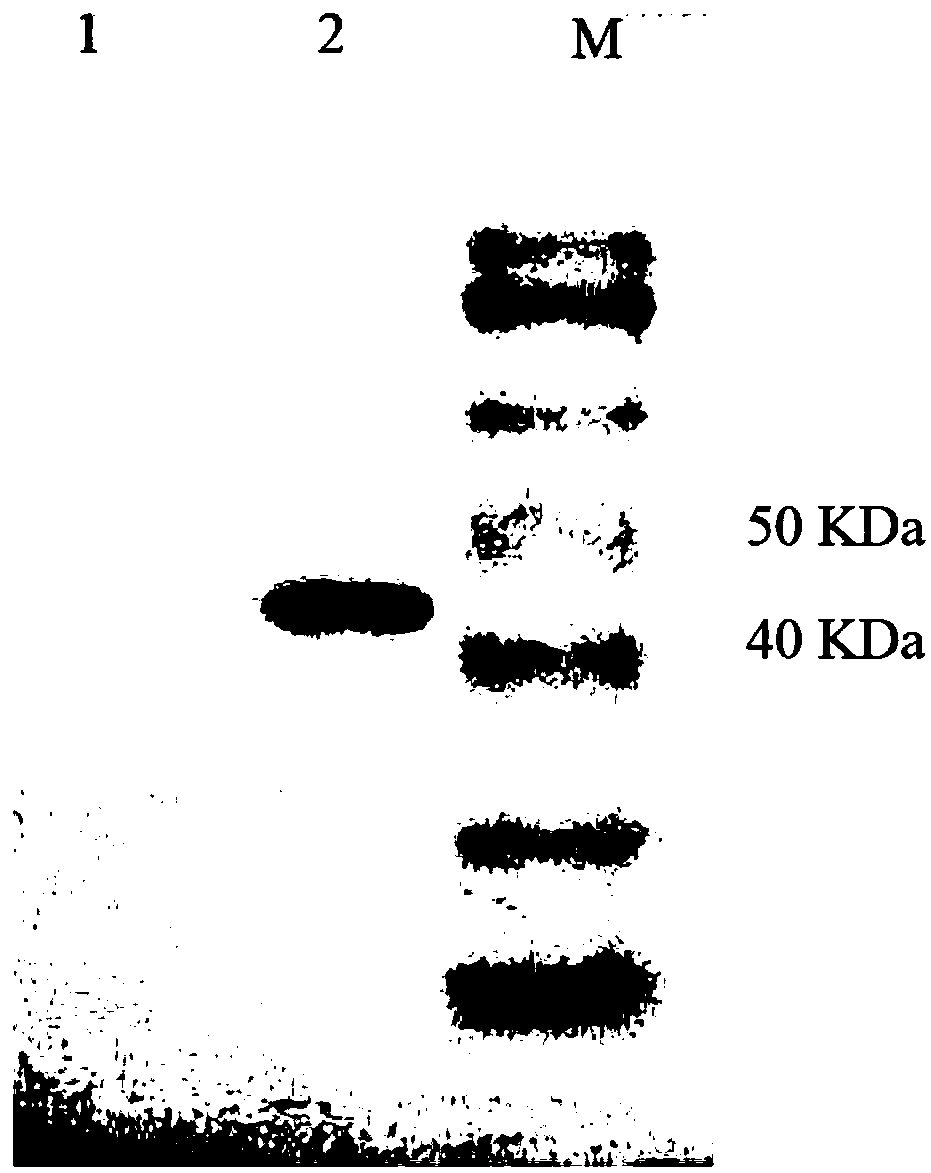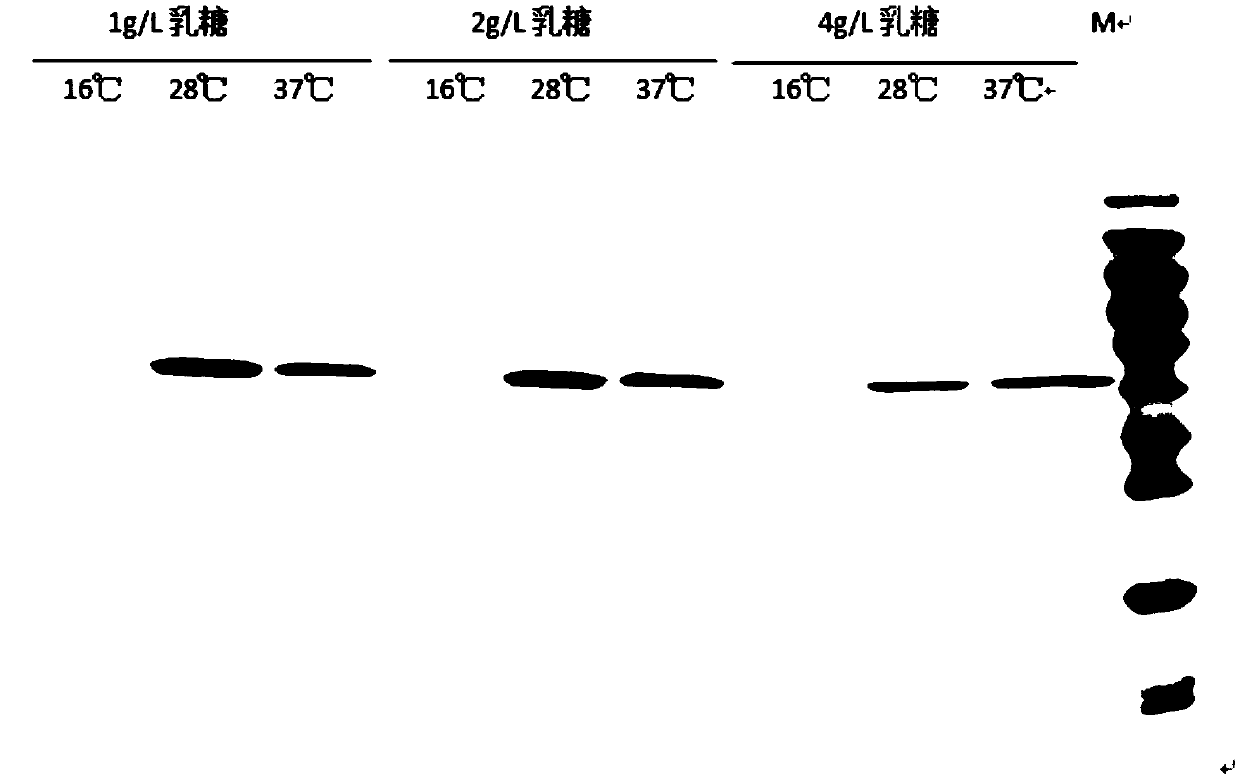Clostridium perfringen alpha toxin genetic engineering vaccine and preparation method thereof
A technology for Clostridium perfringens, genetically engineered vaccines, applied in the directions of genetic engineering, microorganism-based methods, and botanical equipment and methods
- Summary
- Abstract
- Description
- Claims
- Application Information
AI Technical Summary
Problems solved by technology
Method used
Image
Examples
Embodiment 1
[0086] Example 1 Construction of Escherichia coli BL21(DE3) / pET32a-αH176N strain
[0087] 1. Determination of α-toxin gene sequence
[0088] (1) According to the α-toxin gene sequence published on GeneBank (GenBank: AY823400.1), primers were designed as follows:
[0089] Upstream primer: 5-GCGGAATTCATGAAAAGAAAGATTTGTAAG-3 (EcoR I)
[0090] Downstream primer: 5-GCGCTCGAGTTATTTTTATATTATAAGTTG-3(Xho I)
[0091] (2) Using Clostridium perfringens type A (Su 84-A strain) DNA as a template, PCR reaction system: 1 μL template, 0.2 μL high-fidelity Taq enzyme, 5 μL 10×Taq Buffer, upstream and downstream primers (20 μmol / L) each 0.5μL, dNTPs (25mmol / L) 4μL, MgSO 4 (50mmol / L) 2μL, ddH2 O 37 μL.
[0092] 94°C for 2min→(94°C for 30s→62.0°C for 1min→68°C for 1.5min) for 30 cycles→68°C for 10min.
[0093] (3) After the PCR amplified product was subjected to agarose gel electrophoresis, the target fragment was recovered with a gel recovery kit. The recovered target fragments were sent ...
Embodiment 2
[0101] The optimization of embodiment 2 self-inducing conditions
[0102] 1. Preparation of autoinduction medium containing different doses of lactose
[0103] Medium preparation: 10g / L tryptone, 5g / L yeast extract, 5g / L glycerol, 0.25g / L glucose, 25mM Na 2 HPO 4 , 25mM KH 2 PO 4 , 50mM NH 4 CL, 5mM Na 2 SO 4 , 2mM Mg 2 SO 4 , and 1g / L, 2g / L, 4g / L lactose, sterilized at 121°C for 15min, to prepare autoinduction medium containing 1g / L, 2g / L, 4g / L lactose.
[0104] 2. Optimization of self-induction conditions
[0105] Escherichia coli BL21(DE3) / pET32a-αH176N strain was inoculated at 1% in the autoinduction medium containing 1g / L, 2g / L, 4g / L lactose, and the culture medium of each lactose concentration was at 16°C and 28°C respectively. , After 24 hours of shaking culture at 37°C, centrifuge at 6000r / min for 15 minutes, collect the supernatant, filter through a 0.22μm pore size filter, add 4×SDS loading buffer to mix, boil for 5-8 minutes, and carry out 12% SDS- PAGE a...
Embodiment 3
[0106] Example 3 Toxicity determination of recombinant α-toxin αH176N protein
[0107] 1. Lecithin enzyme activity test
[0108] α-toxin has phospholipase C activity, which can specifically hydrolyze phospholecithin in egg yolk into phosphorylcholine and 1,2-diglyceride, resulting in white turbidity. Add 2 μL of the αH176N protein and the wild-type α-toxin in Example 1 to the egg yolk agar plate respectively. No white turbid spots appear in the position, indicating that the αH176N protein no longer possesses the phospholipase C activity of α toxin.
[0109] 2. Toxicity test in mice
[0110] Ten 16-20g mice were randomly divided into 2 groups, 5 in each group. One of them was used as a control group, and the whole bacterial solution of the empty vector Escherichia coli BL21(DE3) / pET32a self-induction was centrifuged and the supernatant was taken, and the filtrate of the 0.22 μm pore-diameter filter was injected into the tail vein of 0.3ml / mouse; Another group of mice was in...
PUM
 Login to View More
Login to View More Abstract
Description
Claims
Application Information
 Login to View More
Login to View More - R&D
- Intellectual Property
- Life Sciences
- Materials
- Tech Scout
- Unparalleled Data Quality
- Higher Quality Content
- 60% Fewer Hallucinations
Browse by: Latest US Patents, China's latest patents, Technical Efficacy Thesaurus, Application Domain, Technology Topic, Popular Technical Reports.
© 2025 PatSnap. All rights reserved.Legal|Privacy policy|Modern Slavery Act Transparency Statement|Sitemap|About US| Contact US: help@patsnap.com



